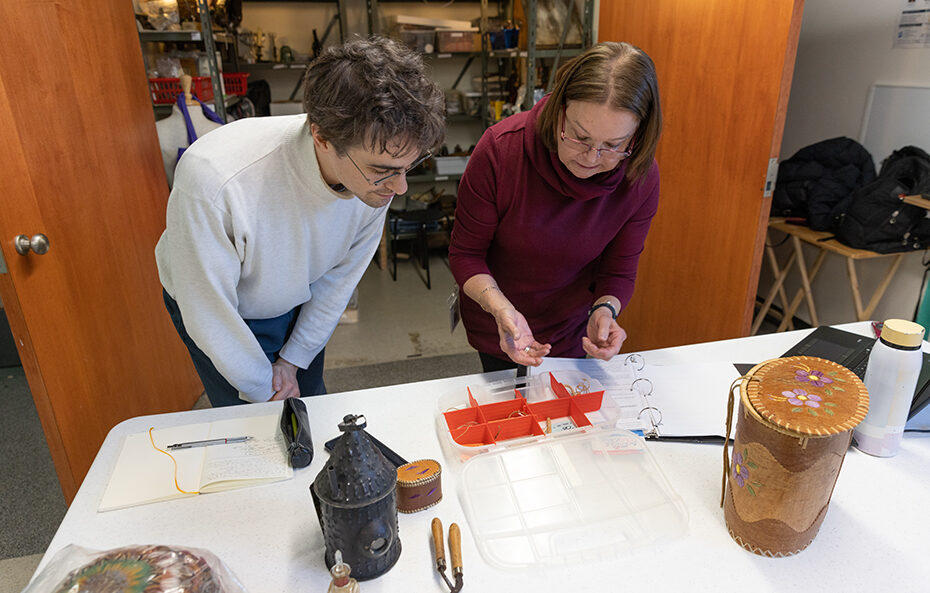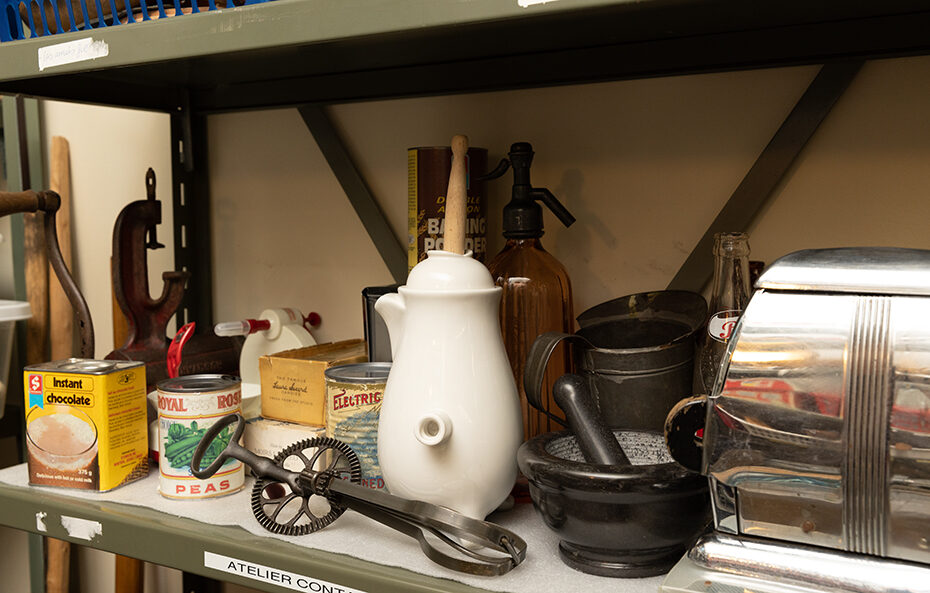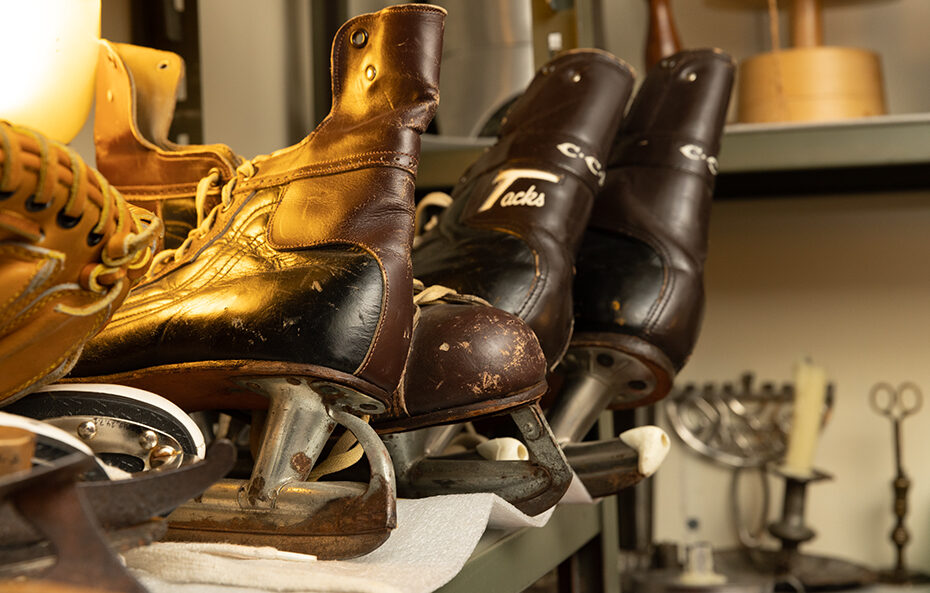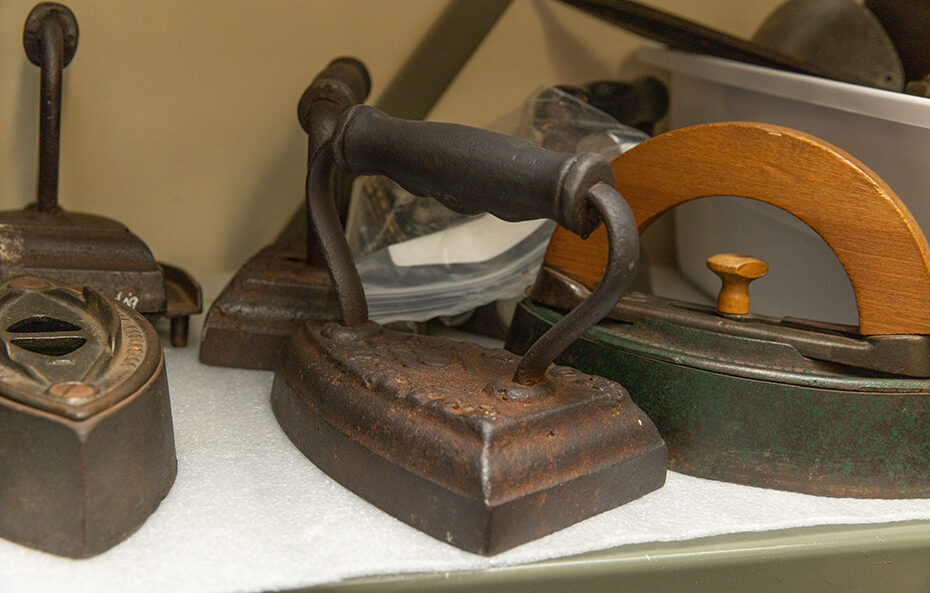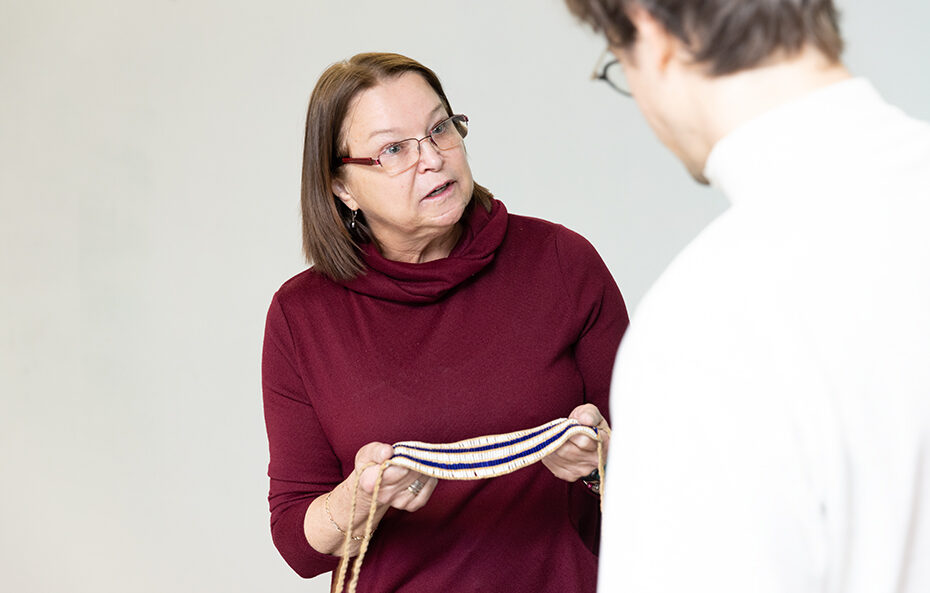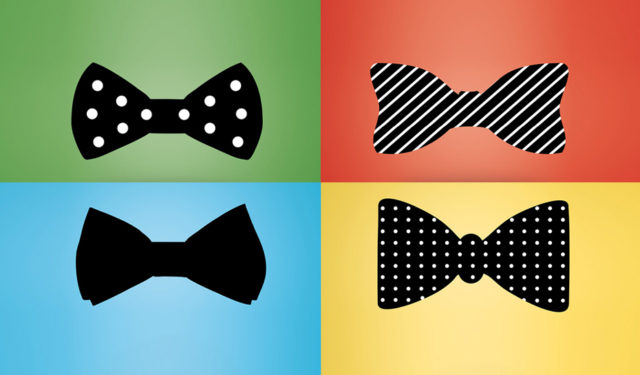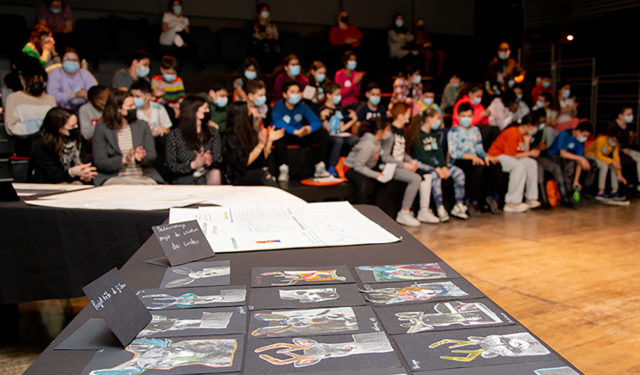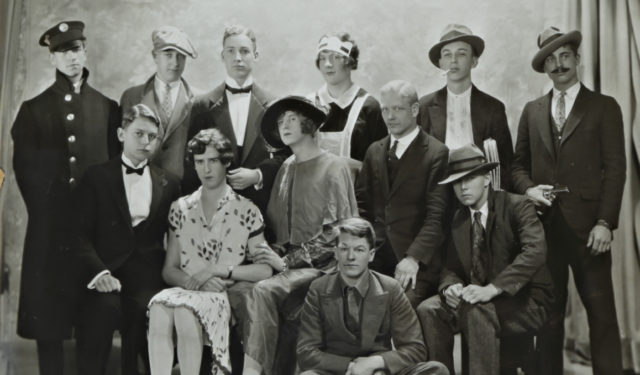Stories of Involvement: A Volunteer and Her Collection
Meet Carole Lafleur, who has been volunteering behind the scenes for eight years to preserve the Museum's educational collection.
April 10, 2023
I caught up with Carole one December morning at the McCord Stewart Museum, where she was working in the Education, Community Engagement and Cultural Programs room. Though she seemed a little nervous, her eyes sparkled as she welcomed me to a long table where she had laid out some of her favourite objects, including a weaving bow, a curling iron, Inuit dolls, photographs, and a reproduction of a wampum belt.
Energetic and passionate, she then began telling me the history of her involvement with the Museum, which is inextricably linked with the history of the educational collection.
I started at the Museum in 2006. I was looking for an intellectually stimulating volunteer activity so I began by giving guided tours and leading school workshops, primarily with groups of elementary students. My favourite part was recounting legends to the children. I loved that!
After leading Museum tours and workshops for over a decade, she was presented with an opportunity to try something new. One March afternoon, I was chatting with Laura Delfino, who was in charge of educational programs at the time. She was concerned about the state of the educational collection, which was quite disorganized. I should add that the Museum was undergoing a period of restructuring and there were few resources available for the collection. I jumped at the opportunity and, along with another guide, Miriam Deniz, offered to start organizing all the objects in the collection. And that’s how my adventure began.
She talked excitedly about the educational collection, from its creation in the mid-1990s to the present day. Distinct from the Museum’s historical collections, the educational collection contains objects meant to be handled by the public during group tours. These objects were either offered to the Museum and rejected for the historical collections at the end of the acquisition process, or else donated directly to the Education, Community Engagement and Cultural Department.
The objects are used in many different ways. An object can provide a springboard for discussion. When people are given a chance to handle an object, they discover other things about it like how, why, where, when, and by whom it was made. A bit like a journalist, we question the object. Interacting with artefacts like these helps us tell the story of the people who made and used them as well as that of the host culture.
Furthermore, the objects in the educational collection have taken on greater importance thanks to the Museum’s strategic plan and its new educational priorities.
We bring these objects everywhere—schools, libraries, various cultural centres. We go out and meet people and the objects generate fantastic discussions. The educational collection has become indispensable over the years because the Museum now offers more and more outreach activities.
When I ask her to name her favourite object in the collection, she briefly hesitates, but I can immediately tell that this is not a moment of reflection, but of emotion.
Oh, I’m going to get emotional, but I don’t want to!
She then walks over to the table and tenderly picks up a piece of woven beadwork, cradling it in her hands.
This is a reproduction of a 400-year-old wampum belt. A wampum belt is a material record of oral tradition: it symbolizes an agreement made between two parties that respects their respective traditions. These two rows represent two boats—an Indigenous canoe and a European ship—navigating the same river. We will travel side by side, together, each in our own boat. Neither of us will try to steer the other party’s vessel.
Carole understands that things are never merely objects. Even if something is a reproduction, she appreciates its importance. This is what makes her so perfect for this role.
Carole is enthusiastic about what she does, especially when she shows me the objects she took out for the interview. With the ease of a woman who has over a decade of experience as a Museum guide, she introduces me to the touching stories of each object.
I’m so happy to be here! The Museum has entrusted me with so much and given me so much latitude. I have a lot of freedom so the job truly suits me to a T. I really enjoy meeting all these passionate people who are so generous with their time and expertise.
Clasping her hands, Carole adds:
I don’t like talking about myself. I like working here, behind the scenes, with the objects. But I’m happy to have this opportunity to thank the Museum team for their confidence in me.
How do you see your future at the Museum, Carole?
I hope to complete the inventory of the educational collection. To date, 900 out of approximately 1,300 objects have been inventoried and photographed. I’ll be extremely proud if I can finish the computerized inventory. I’d also like to spend some time researching and documenting the most important objects in the collection, as well as training those who will take over from me!
She sighs, gives me a smile and concludes the interview by saying:
We’ve covered everything, haven’t we? I’m going to get back to work!

